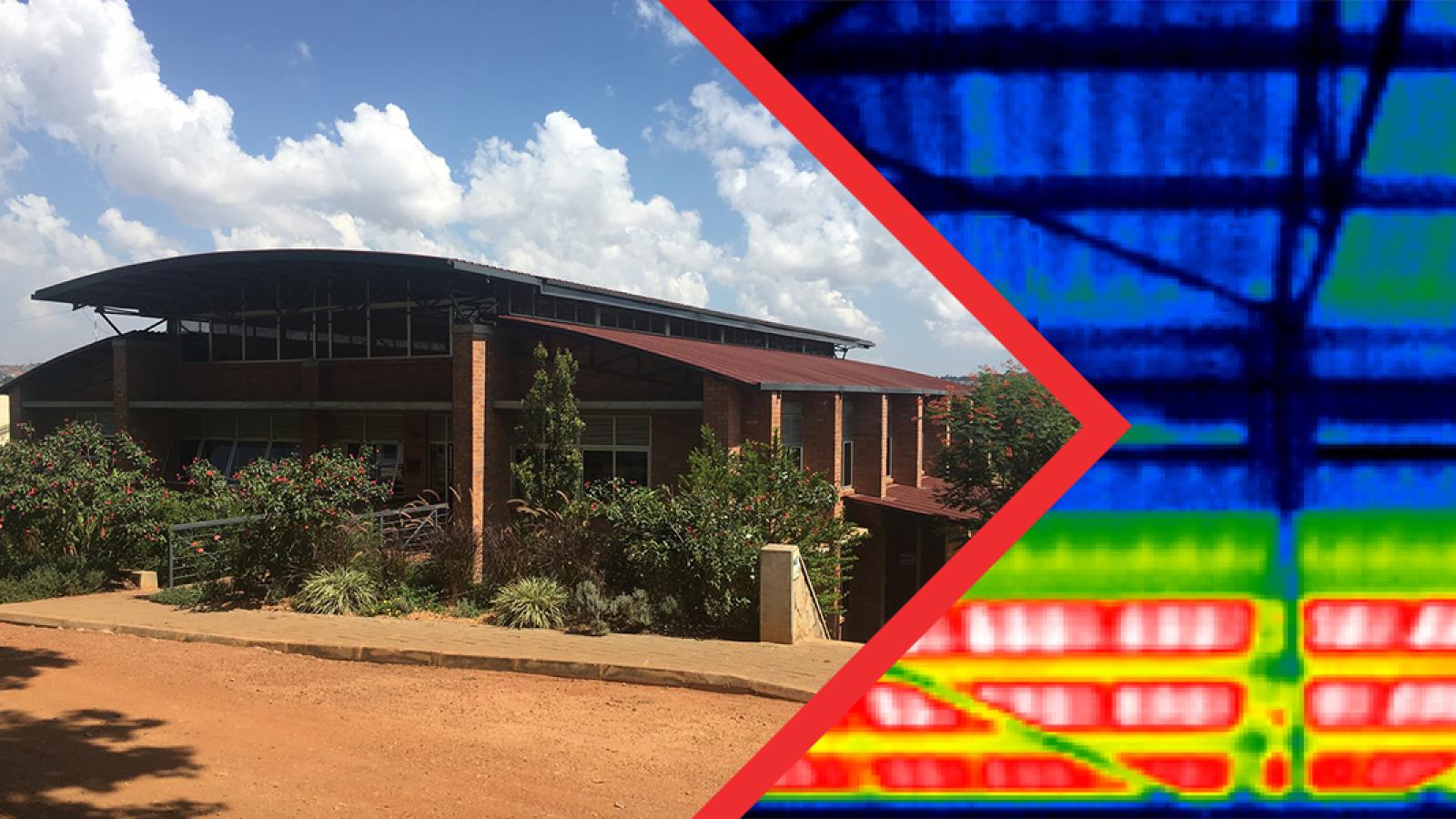Creating temperate indoor environments in the schools, hospitals, and ministry buildings we design.
Especially during the hot season, the EMI Uganda office can get uncomfortably warm. In locations where central air is predominately used to heat and cool indoor spaces, it is easy to think of controlling comfort levels primarily through air temperature. However, when we isolated and measured the indoor air temperature, we found that, especially at the peak of the day, the indoor air temperatures did not differ much from the comfortable outdoor temperatures one would find in the shade of a tree. So why, if the air temperatures were roughly the same, did the inside of the building feel so much more uncomfortable?
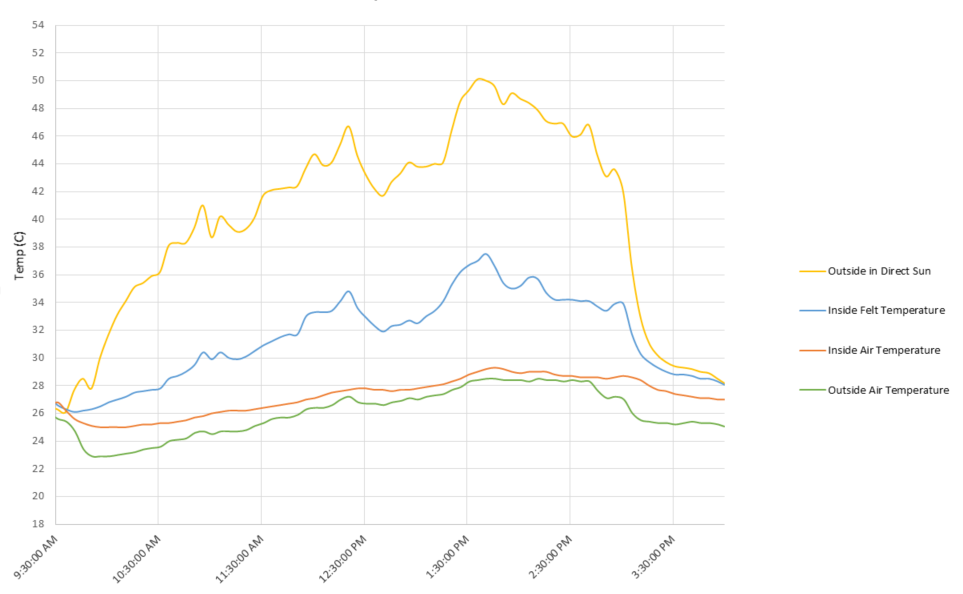
One reason can be seen when we consider the three types of sensible heat transfer. Conduction is the transfer of heat from solid to solid (or stationary fluids). Convection is the transfer of heat through a moving fluid (gas or liquid). Lastly, radiation is the transfer of energy (turned into heat after it is absorbed by an object) through electromagnetic waves. Just as how light is transferred, radiant energy does not require a medium to move through and thus can move through empty space. This last form of heat transfer is often overlooked, but can be just as important – if not more important – than air temperatures.
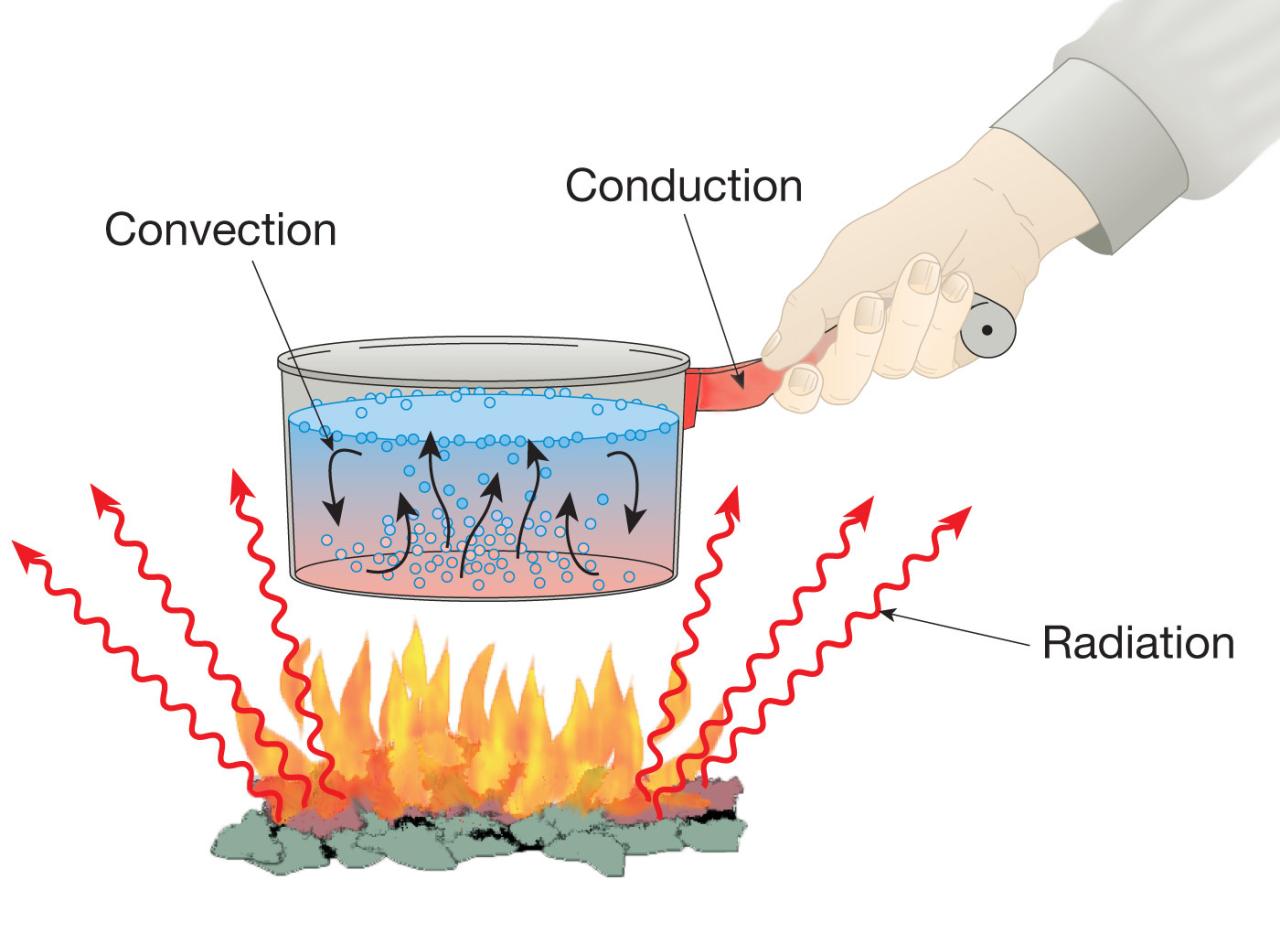
In cold weather climates, air temperatures inside and outside a building are often drastically different. Heating and cooling air is the primary way of keeping indoor space comfortable. Consequently, modern cold weather building techniques primarily focus on resisting convective and conductive heat transfer. To minimize the movement of air between outside and inside environments, structures are built near air-tight to resist convective heat transfer. Thick insulation is used to resist conductive heat flow between the building’s warmer inner surfaces and cooler outer surfaces. Because of this insulation, the building’s internal surfaces are often very close to the conditioned air temperature of the room. Therefore, controlling radiant heat flow is largely taken care of indirectly by the thick insulation used to minimize conductive heat transfer.
However, in warm weather climates in developing nations, buildings are often built with the opposite goal in mind. Mechanically conditioned air is not typically used, and so buildings are purposely designed to be as open as possible, maximizing convective transfer between the outside and inside air. Unlike conditioned air spaces, the best case scenario is often to match outside air temperatures. To minimize costs, building shells are made as thin as possible - just thick enough to be structurally sound, with insulation rarely used. Due to the difference in building styles and the more direct and intense sunlight in the tropics, mitigating radiant heat loads (often an afterthought in cold weather climates) can become of primary importance in warm weather climates.
The net exchange of radiant energy from an object to its surroundings is understood by the Stefan-Boltzman Law as seen below. While the intent of this article is not to dwell on the calculations, this equation highlights a few important concepts.
q = εσ( Th4 - Tc4) Ac
where
q = heat transfer per unit time (Watts)
ε = emissivity coefficient of the object (0 to 1, where 1 is for a perfect black body)
σ = Stefan-Boltzmann constant: 5.6703 10-8 (W/m2K4)
Th = hot body absolute temperature (Kelvin)
Tc = cold surroundings absolute temperature (Kelvin)
Ac = area of the object (m2)
Let’s start by looking at the interplay of temperatures. The first thing to notice is that the temperature values are of the objects involved in the heat transfer (things that intercept and absorb electromagnetic waves). While air temperatures may influence the object surface temperature, and vice versa, air temperature is not a direct factor in radiant heat transfer. The second thing to notice is that the temperatures are raised to the fourth power, which means changes in temperature have a high degree of influence on the amount of radiant energy transferred.

https://www.indiegogo.com/projects/a-library-to-lift-up-a-community#/
We have all experienced the relief that comes when you move out of direct sunlight into the shade of a tree on a hot day. The air temperature is not different in the 2 foot distance of being in the sun and in the shade. Rather, the felt difference comes from the change of object temperatures with which our bodies are interacting. Because it travels the same as light, radiant energy is exchanged with objects in our body’s line of sight. When we are standing in the direct sun, the net exchange of radiant energy is coming from the very hot sun to us. When we step into the shade of a tree, our body is now interacting with the much cooler canopy of the tree. If the tree canopy is 75F (24C), then the net flow of radiant energy is in the opposite direction - from our warmer body outwards towards the cooler tree, taking heat away and cooling us down.
In the 1970’s, inventor Cal MacCracken was testing a method of freezing ice using cold air. Even with 20F (-7C) air up to a foot above the ice, he un-expectantly observed the ice sheet melting. What MacCracken came to realize was that the steel roof of his test facility was getting up to 140F (60C), and the subsequent heat radiating from the underside of the roof was more than enough to melt the ice even when the air temperature around the ice was well below the freezing point of water.
This observation led MacCracken to develop one of the largest energy saving products currently used on thousands of ice rinks: a low emissivity ceiling. This leads us into the second concept that is important to understand in the radiant heat transfer equation: emissivity (ε in the Stephan-Bolzmann equation). MacCracken understood that not all shades are equal, but that the surface properties of the emitting object have a significant impact on the rate of energy it emits. For example, aluminum has an emissivity value much lower than steel, and so MacCracken developed an aluminum ceiling which saves ice rinks significant cooling costs by blocking most of the roofs radiant heat from getting to the ice.
All materials have an average emissivity value, expressed between 0 and 1, with 1 being a perfect emitting object (black body). Most building materials have emissivity values between 0.85 and 0.95. It is important to note that the emissivity value has to do with the outermost surface of an object. Heat conducts within an object to the outer surface, and then radiates from the outer surface. Since most building materials are eventually painted, the emissivity value of the paint, not the base material, is what matters. Most paints have a high emissivity value of around 0.9 to 0.96. Many polished metals have low emissivity values of less than 0.10. So, if we consider the primed (painted) underside of an aluminum roofing sheet at 140F and an unpainted aluminum sheet at the same temperature, the emission rate of radiant heat from the painted sheet can be over 10 times higher.
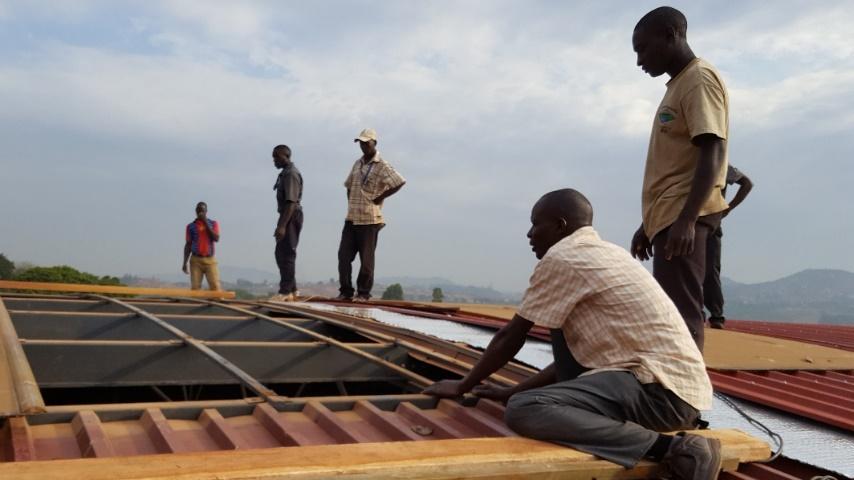
With this understanding of radiant heat transfer, we understand why the EMI Uganda office experienced such an uncomfortable working environment. Although the air temperature was moderate, the underside of the exposed painted roofing sheets was measured to be up to 144F (62C). If we assume the surface temperature of people is 93F (34C), we can see that the interplay of the large hot underside of the roof, with its high emissivity, was creating a substantial net flow of radiant heat to people underneath. To mitigate this, a second roofing sheet with a thin aluminum radiant barrier in between was installed, and the same exposed underside of the roof dropped in temperature by roughly 50F (28C).
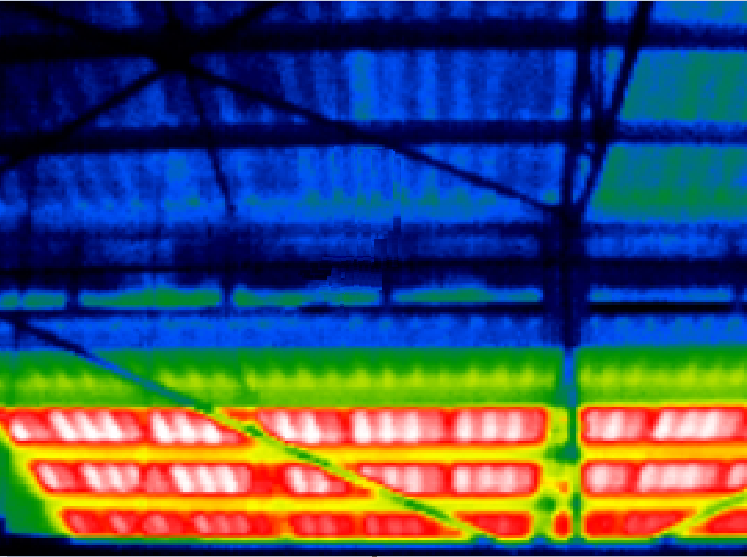
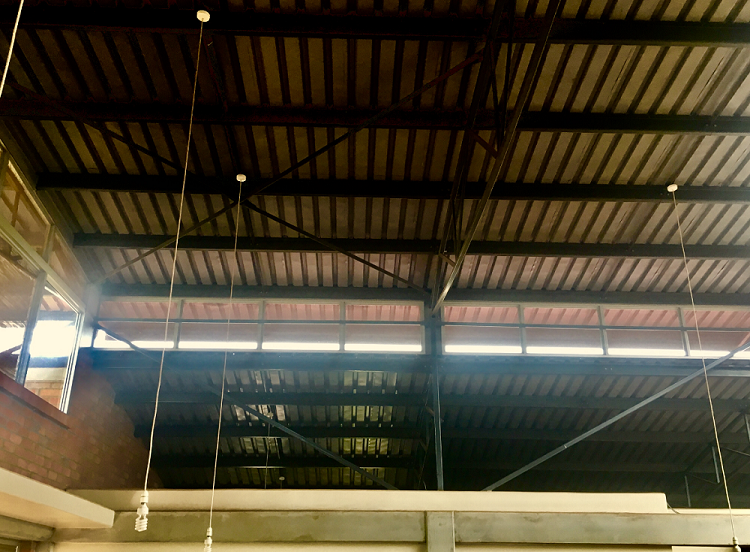
In many areas where EMI works, it is often cost prohibitive to use conditioned air as a means of achieving a comfortable indoor environment. In the absence of mechanically controlled air temperatures, the focus often switches to ventilation - which is good and very important. However, it is possible to have favorable air conditions and still feel uncomfortable due to the fact that the surrounding large inner surfaces our bodies are interacting with (undersides of roofs, ceilings, walls and floors) are at elevated temperatures. Controlling a building’s inner shell temperatures is just as important as the indoor air temperature (and sometimes more so).
The intent of this article is to focus on the different modes of heat transfer – especially the often misunderstood and overlooked mode of radiant heat transfer. These principles will guide us as we seek to control indoor surface temperatures of buildings in the developing world. Armed with this capacity, we can help create transformational atmospheres where men and women can work, children can learn, and the gospel can go forward.
The EMI Fund
The EMI Fund supports all that we do at EMI. With a strong foundation, we can keep designing a world of hope.
EMI Tech is looking for contributors – write to editor@emiworld.org with your topic and article outline.
